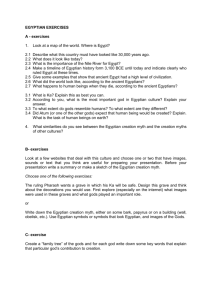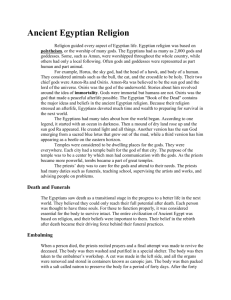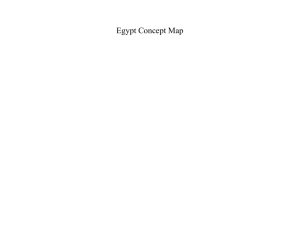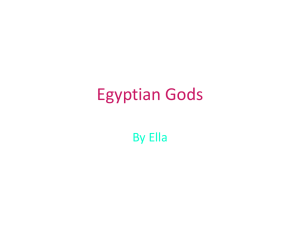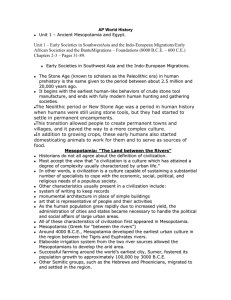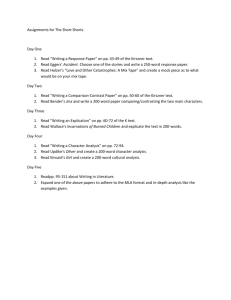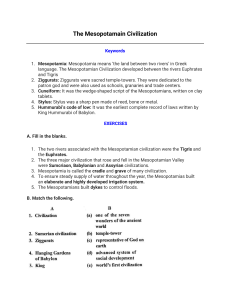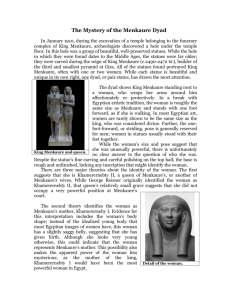ExamTutorials.com_HUM 205 WEEK TWO 2
advertisement
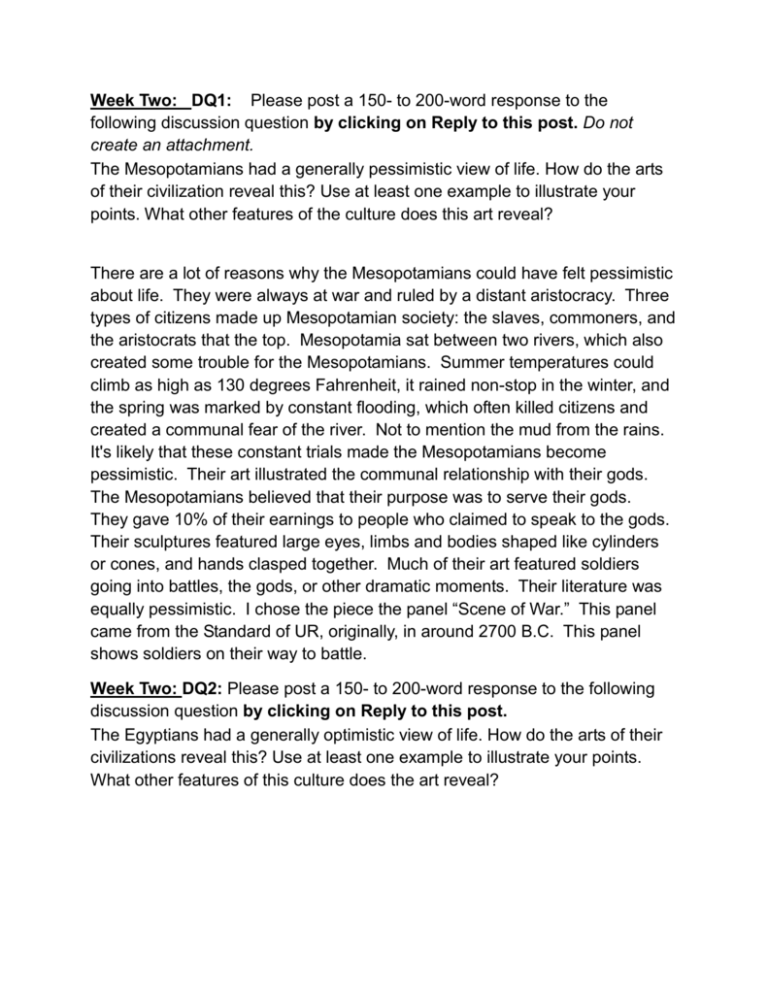
Week Two: DQ1: Please post a 150- to 200-word response to the following discussion question by clicking on Reply to this post. Do not create an attachment. The Mesopotamians had a generally pessimistic view of life. How do the arts of their civilization reveal this? Use at least one example to illustrate your points. What other features of the culture does this art reveal? There are a lot of reasons why the Mesopotamians could have felt pessimistic about life. They were always at war and ruled by a distant aristocracy. Three types of citizens made up Mesopotamian society: the slaves, commoners, and the aristocrats that the top. Mesopotamia sat between two rivers, which also created some trouble for the Mesopotamians. Summer temperatures could climb as high as 130 degrees Fahrenheit, it rained non-stop in the winter, and the spring was marked by constant flooding, which often killed citizens and created a communal fear of the river. Not to mention the mud from the rains. It's likely that these constant trials made the Mesopotamians become pessimistic. Their art illustrated the communal relationship with their gods. The Mesopotamians believed that their purpose was to serve their gods. They gave 10% of their earnings to people who claimed to speak to the gods. Their sculptures featured large eyes, limbs and bodies shaped like cylinders or cones, and hands clasped together. Much of their art featured soldiers going into battles, the gods, or other dramatic moments. Their literature was equally pessimistic. I chose the piece the panel “Scene of War.” This panel came from the Standard of UR, originally, in around 2700 B.C. This panel shows soldiers on their way to battle. Week Two: DQ2: Please post a 150- to 200-word response to the following discussion question by clicking on Reply to this post. The Egyptians had a generally optimistic view of life. How do the arts of their civilizations reveal this? Use at least one example to illustrate your points. What other features of this culture does the art reveal? Egyptian art shows the optimism of the Egyptian people through their myths and their preparations for the afterlife. It may seems strange, but building chambers and statues for a person's eventual death is optimistic, because it shows faith that even death contains eventual good. Their art is not concerned with war or bad things, but instead things like successful hunts – even hunts where the Egyptians and their cat catch prey at the same time. One example of this kind of art is "Nobleman Hunting in the Marshes, from a tomb at Thebes, ca. 1400 B.C.E., Eighteenth Dynasty.” Works like Queen Nefertiti, ca. 1348-1336 B.C.E. and the god sarcophagus of Tutankhamen, ca. 1336-1327 B.C.E., show that the ancient Egyptians valued beautiful and intricate creations. The wonders of advanced architecture and creativity that made the Great Pyramids and the nobles' tombs in ancient Egypt were evident in the Egyptian art. Tombs were built on the scale of homes, rooms were created to worship different gods, and even a room only for embalming shows the effort and forethought that went into building Egyptian buildings. King Menkaure and Queen, ca. 2490-2472 B.C.E., shows how durable sculptures were, as a stone web stretches between the figures. The figure of the Queen holds King Menkaure in a manner which shows her support for her husband as a man, not only as a king.

